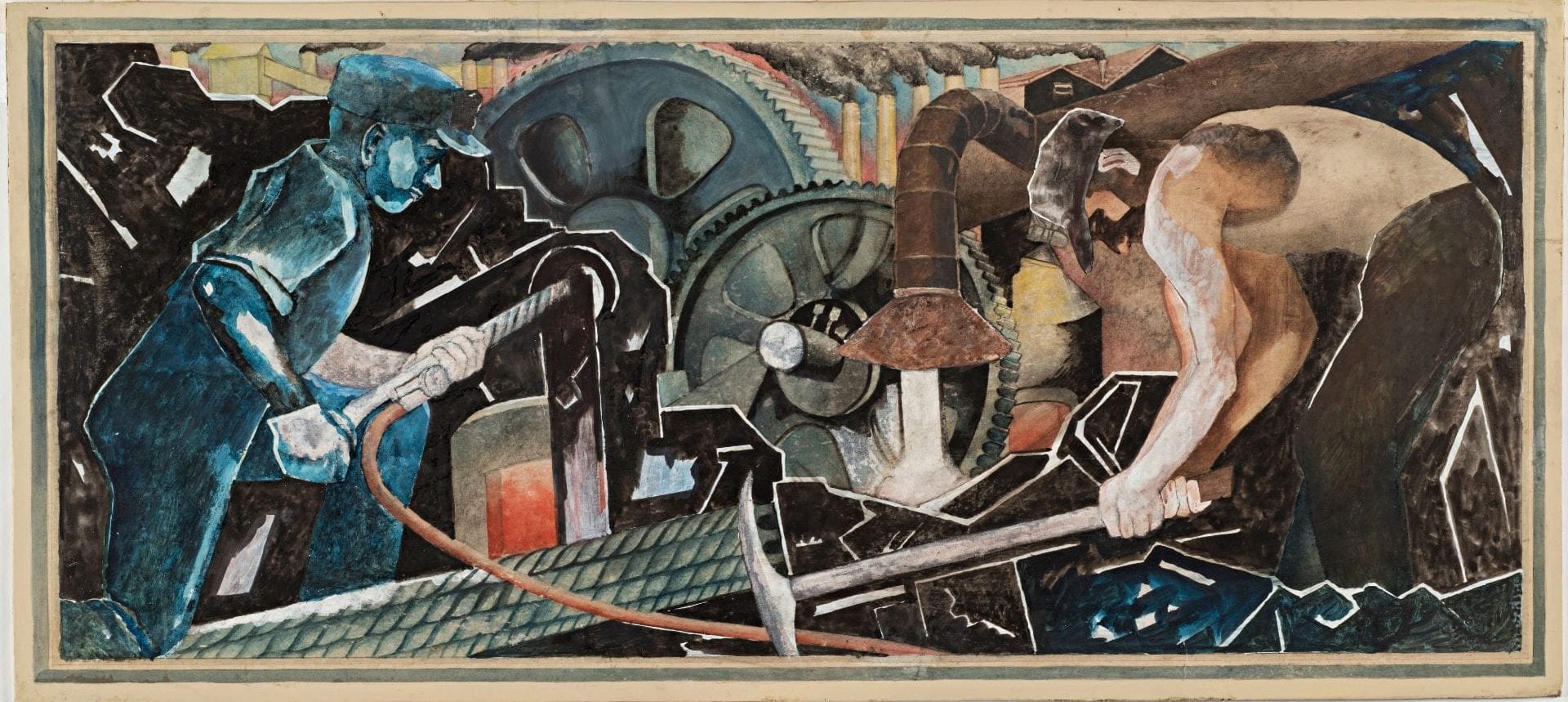Celebrating Heroes: American Mural Studies of the 1930s and 1940s from the Steven and Susan Hirsch Collection
March 5 – June 15, 2019
 Franklin D. Roosevelt’s jobs programs for artists during the 1930s and 1940s introduced a golden age for murals in America. New Deal artists took inspiration from the panels of the Mexican muralists, in which various ethnic groups and the everyday worker became monumental “heroes.” Farmers, miners, American Indians, settlers, all found places in the government murals that still greet visitors in sites such as post offices and schools.
Franklin D. Roosevelt’s jobs programs for artists during the 1930s and 1940s introduced a golden age for murals in America. New Deal artists took inspiration from the panels of the Mexican muralists, in which various ethnic groups and the everyday worker became monumental “heroes.” Farmers, miners, American Indians, settlers, all found places in the government murals that still greet visitors in sites such as post offices and schools.
This exhibition of over fifty drawings explores the themes that emerged in American mural making from the Great Depression until after World War II. Artists featured include Anton Refregier, Jenne Magafan, Edward Chávez, and Arnold Blanch.
The exhibition provides an intimate look at the thinking processes of these artists and others who competed for New Deal mural commissions. Colorful and dynamic preliminary studies offer insights into artists’ thoughts about interpreting history, the notion of “hero,” and democratic ideals – topics still relevant today.
This exhibition has been organized by the Frances Lehman Loeb Art Center of Vassar College, Poughkeepsie, New York.
Related Events:
Thursday, April 25, 5:30 p.m.
A New Deal for Public Art in the Free State
Documentary screening and post discussion with filmmaker Kara Heitz, Kansas City Art Institute.
Thursday, May 2, 5:30 p.m.
“Heroes for Hard Times: American Art During the 1930s and 1940s”
Talk by Lara Kuykendall, Ball State University
Image: Philo B. Ruggles (United States, 1906-1988) and John Ruggles (United States, 1907-1991), Steel Workers, 1939, competition sketch for Section of Fine Arts mural, post office, Bridgeport, Ohio (unrealized), gouache, watercolor, and graphite on cardboard, 16 1/4 x 37 3/8 in., Frances Lehman Loeb Art Center, Vassar College, Gift of Susan and Steven Hirsch, class of 1971, 2015.23.4.2